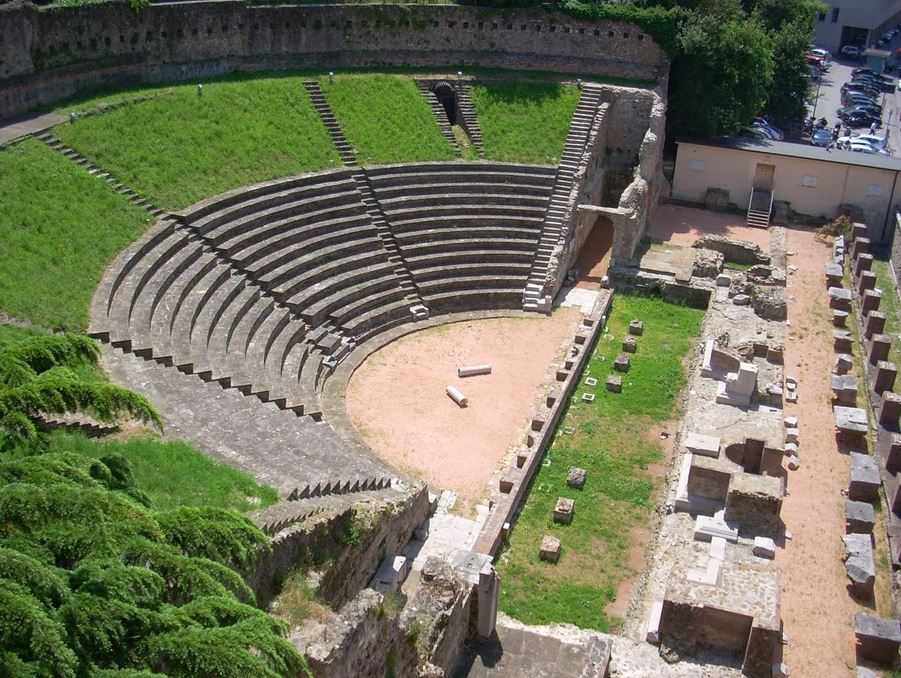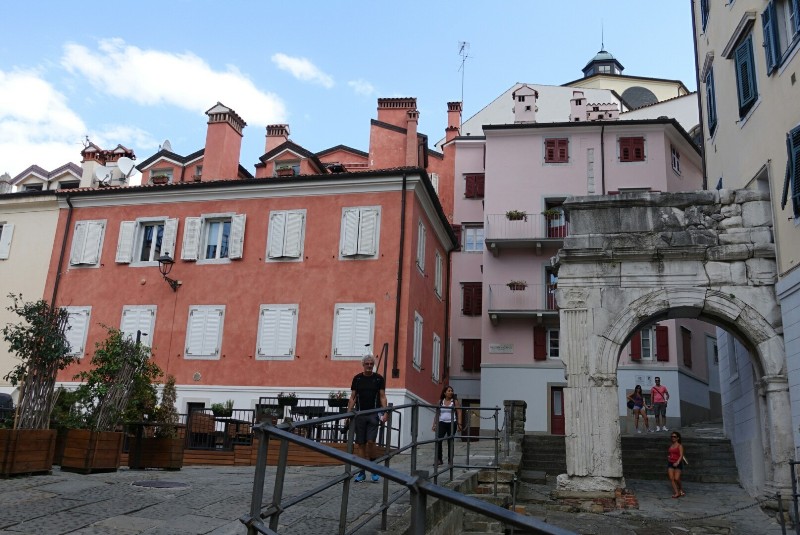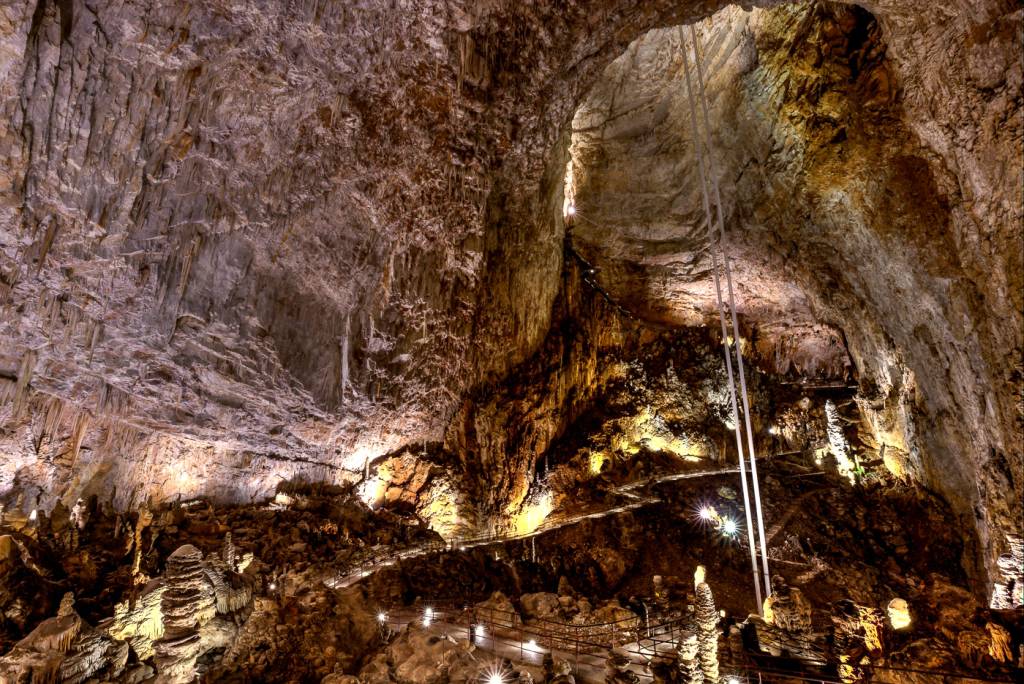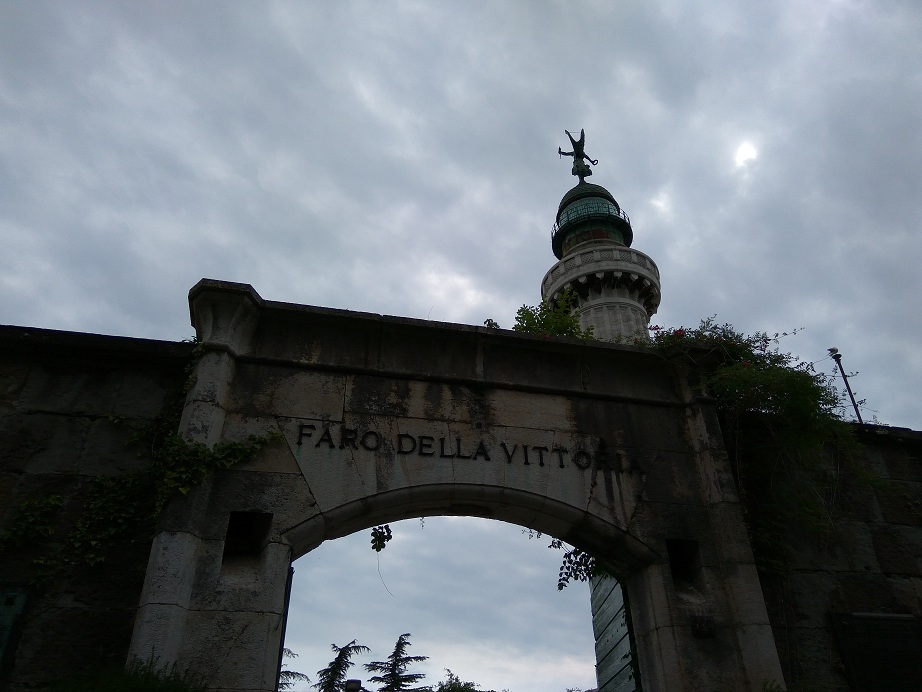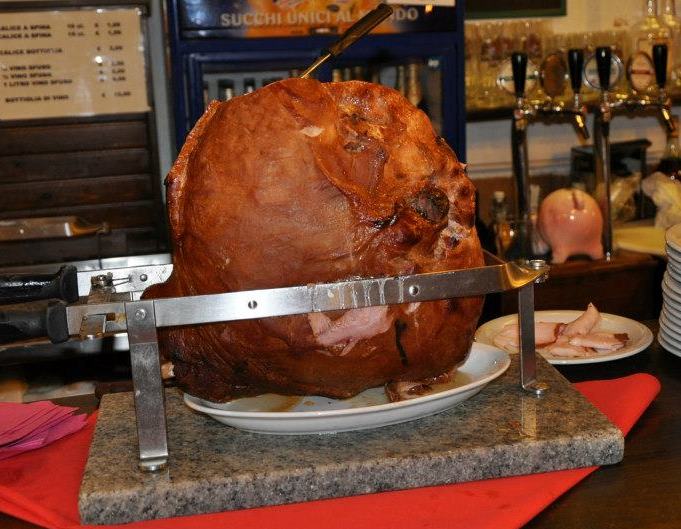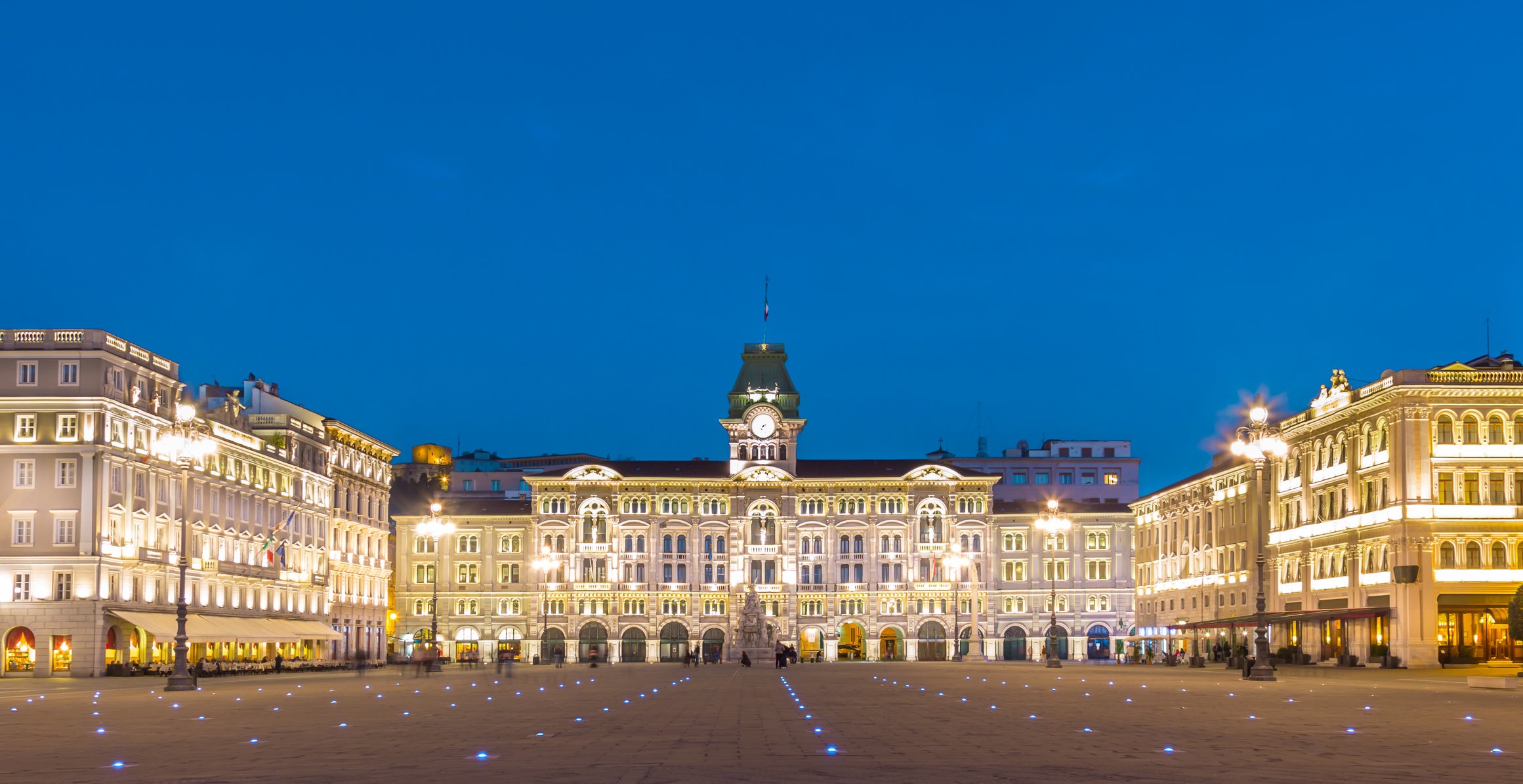
Trieste is a unique city for both its geographical location on the border between different nations in an enclosed area enclosed between the karstic plateau and the Adriatic Sea, and the historical events that interested and influenced it over the years from cultural and architectural point of view.
After the recent works of renovation and restoration, the historic center of Trieste has gained again the elegance and splendor of its past, from the findings of Roman ruins to the splendid palaces dating back to the Austro-Hungarian period.
Definitely worth a visit the main square Piazza dell'Unità d'Italia, which currently represents the largest square overlooking the sea in Europe, the San Giusto complex located on the homonymous hill overlooking the town and the Teresian district, evidence of economic and social, cultural development inherited during the Austrian domination. By walking in the center of Trieste you will notice a composite architectural style, with an alternation of neoclassical, eclectic and liberty style buildings that gives to the city a unique and particular charm.
If your visit will take more days, we suggest you to visit the Karst plateau where you can explore and discover a unique environment, characterized by woods, meadows, deserted lands and a fascinating underground world. The environment becomes particularly attractive during autumn when the sumac bushes and the terebinth leaves color the limestone rocks of an intense red.
Of notable interest, nearby Trieste, the small town of Muggia, the village of Duino, with the splendid Castle of the princes Torre e Tasso and the fortress od the White Lady, the exclusive village of Portopiccolo and the Villaggio del Pescatore (fisherman's village) where you can visit the awesome paleontological site.
Trieste ha una scontrosa grazia. Se piace, è come un ragazzaccio aspro e vorace, con gli occhi azzurri e mani troppo grandi per regalare un fiore.
Trieste has a surly grace. If you like it, it's like a rough and voracious bad boy, with blue eyes and too big hands to give a flower. (Umberto Saba)
1. Piazza dell'Unità d'Italia
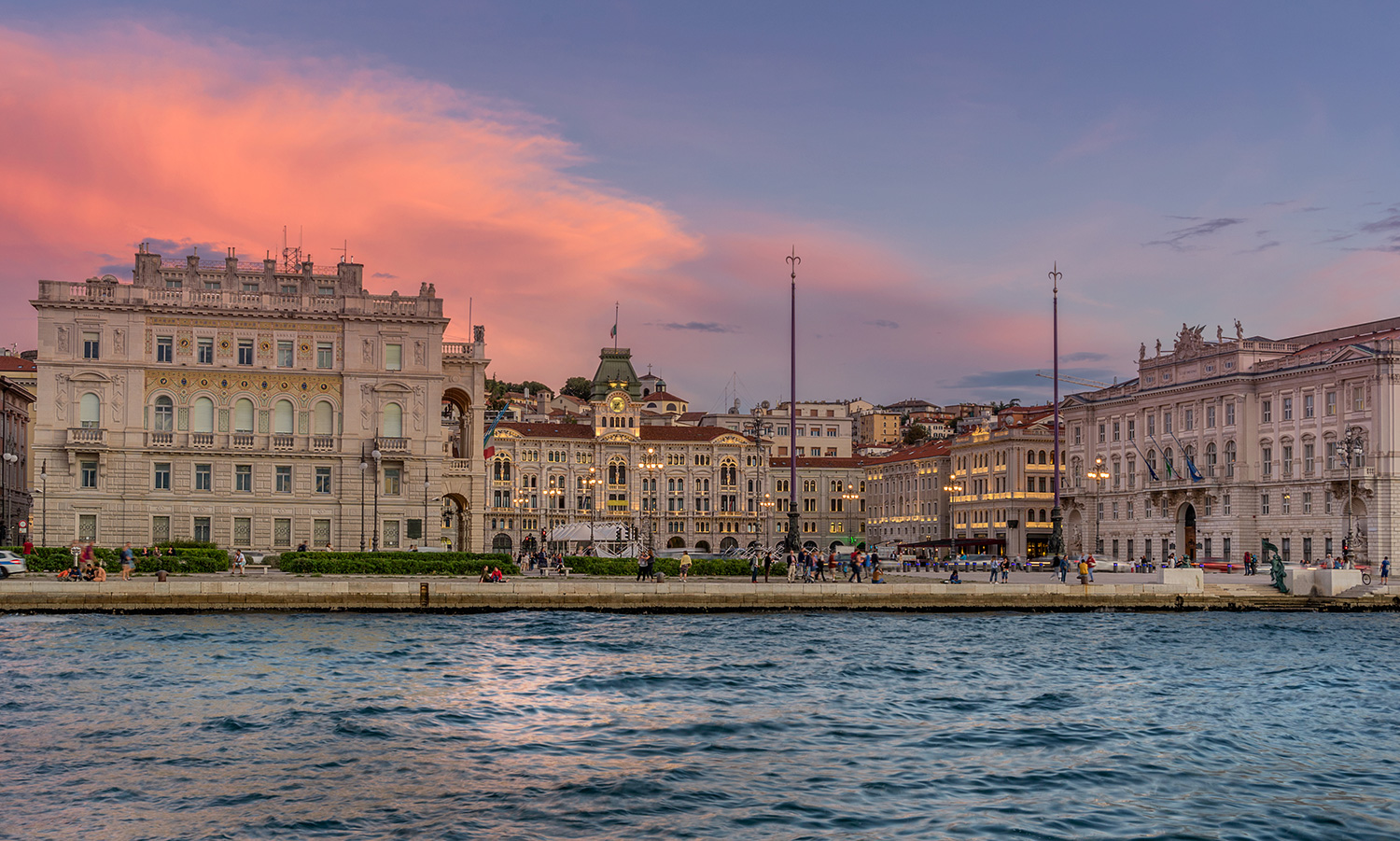
Piazza dell'Unità d'italia
The main square of Trieste in the past was looking much different than today: it was called St. Peter's Square because of the church built up during 1367 that was located where today stands the building of the City Hall called "Model", and demolished in 1871. It was later renamed Piazza Grande (Big square) then, in 1918, after the annexation of the city to the Kingdom of Italy, it became Piazza dell’Unità d’Italia (square of Italian unity). Initially, the square was also closed on the sea side, from eighteenth century remain a picturesque corner of the palace that was the farmer home of Riccardo Pitteri, owned by Lloyd Adriatico since 1950, the column of Charles VI dated 1728 and the four continents fountain, the work of Mazzoleni of 1751 recently replaced to its original position.Once demolished the buildings hindering the sea view, throughout the second half of the nineteenth century the view was still partially hidden by the Dogs Garden, eliminated in 1919. In 2001 the square was affected by an important consolidation and restoration work: the facades of nineteenth century buildings of Lloyd Triestino, Stratti and Vanoli Assicurazioni Generali were returned to its ancient grandeur and the floor was paved with large blocks of sandstone that recall the original paving stones. Other buildings overlooking the square have a great historical and architectural interest: Model building so named because it should have been an architectural model for other buildings in the city, the Palace of the Prefecture, characterized by splendid mosaics depicting the coat of arms sabaudia family, Pitteri palace, the oldest building in the square, the Grand Hotel Duchi d'Aosta and the City Hall. Inside the bell tower that dominates the City Hall building two bronze Moors known with name of Micchezze and Jachezze, mark the passage of time with their tolls since January 14th, 1876. At the end of the square, on the side facing the sea rise two monumental pili, by Attilio Selva, on top of which, during the celebrations, waving the civic and national flags. On the pavement a blue LED system indicates the limit reached by the sea before the ancient mandrač was buried.
Location
Piazza dell'Unità d'Italia
Opening hours
Visitable every day of the year
Entry fee
Free entry
2. Miramare Castle
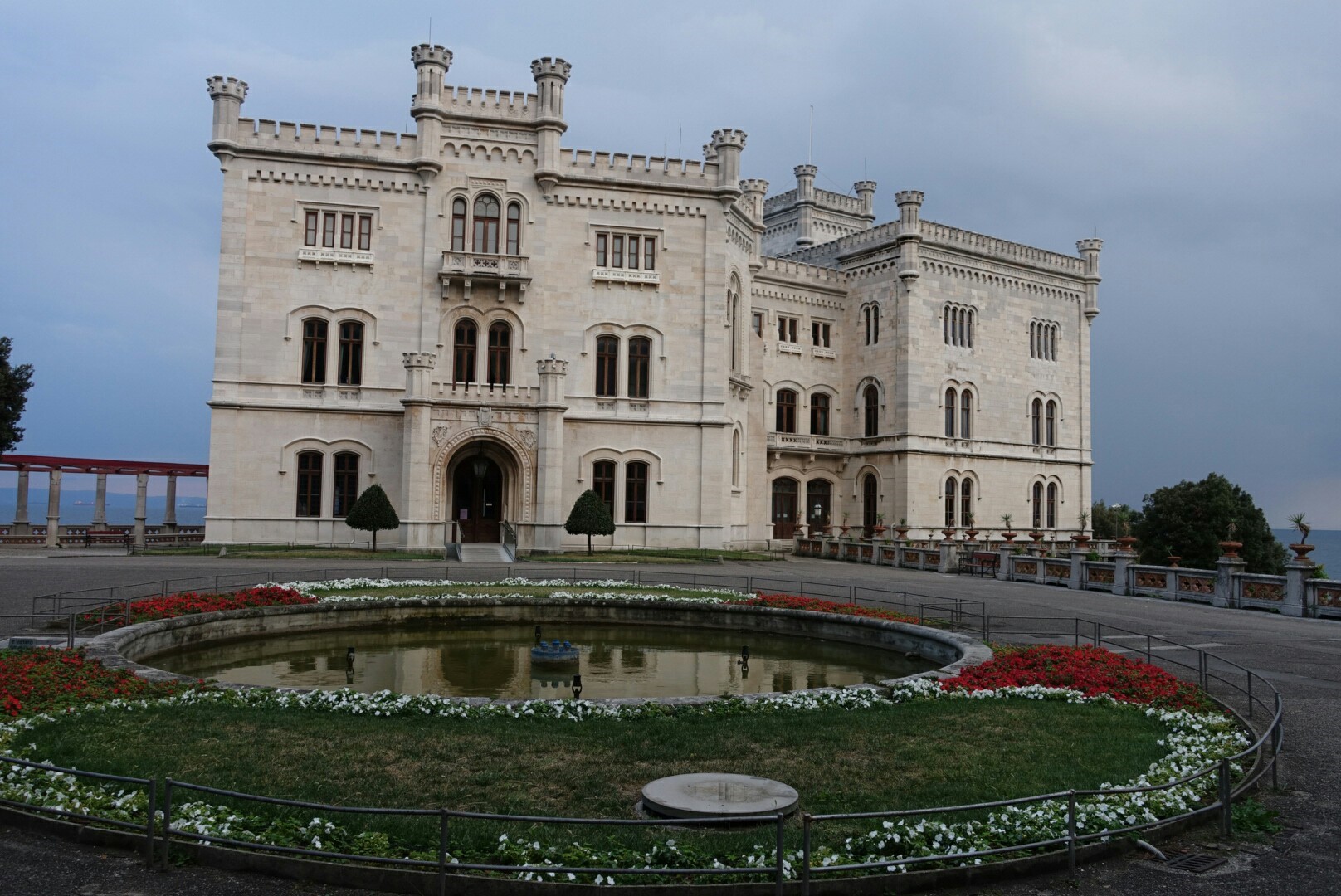
Miramare castle
During year 1855 the Archduke Ferdinand Maximilian of Hapsburg was sailing nearby Trieste when, seized by an impetuous bora, he was forced to repair, aboard his war ship "Madonna della Salute" in the Grignano bay, asking for hospitality to a fisherman. The next day, admired by the enchanting beauty of the area, Archduke decided to buy a land and build a Norman style house, made of white blocks of Istrian stone, mandating the engineer Carlo Junker to trace the design on the basis of his brilliant directions. For three years, from Christmas 1860 to the spring of 1864, Miramare was a place of serenity to Maximilian and his wife, Archduchess Charlotte of Belgium, both loved by the citizens of Trieste for their generosity and kindness. When the crown of Mexico had been offered to the young prince he departed from Miramare with no return. After three years of unpopular kingdom Maximilian was executed by a Republican Court in Cerro de las Campanas, near Queretaro. The pain for Maxcimilian death drove the beautiful Carlotta insane: she was vainly begging the pope and kings for the salvation of her husband.
Miramare Castle, as a Maximilian’s bequest, was assigned to the Superintendency of Fine Arts, and from 1955 became a national museum. Today the tourists can visit the rooms of the castle in which are stored furniture and valuable works collected by the Emperor and the lush grounds of the castle where it is possible to admire rare species of trees such as the araucarias of Mexico and the two redwood trees, planted himself Archduke thirty meters high, the Indian bamboo and arbutus Asia.
Location
By city bus line n. 6, from the central station, direction Grignano, get off at the "bivio" stop and walk for about 15 minutes to get to the Castle.
During the summer season a maritime connection is also available: starting from the city center (Molo Audace) or from Barcola or from Sistiana, the "Delfino Verde" motorboat takes you directly to Grignano bay.
Opening hours
9.00 - 19.00
every day of the year (ticket office closing at 18.30)
Closing December 25th and January 1st
From September to May, during the closing time before 19.00, access to the Castle is only possible through the main entrance (sea side - "Viale Miramare").
from Monday to Sunday
8 am - 4 pm from October to February
8.00 am - 7.00 pm from March to September
Entry fee
From 1 April 2018 to 11 May 2018:
- FULL: € 8.00
- REDUCED: € 4.00
From 12 May 2018 to 30 December 2018:
- FULL: € 12.00
- REDUCED: € 6.00
3. San Giusto Hill: castle, basilica and lapidary garden
The hill of San Giusto is the historical landmark of the city since Roman times as witnessed by the forensic basilica remains located in the square in front of the castle. The hill dominates the city and offers an evocative view of the gulf and the urban system below.
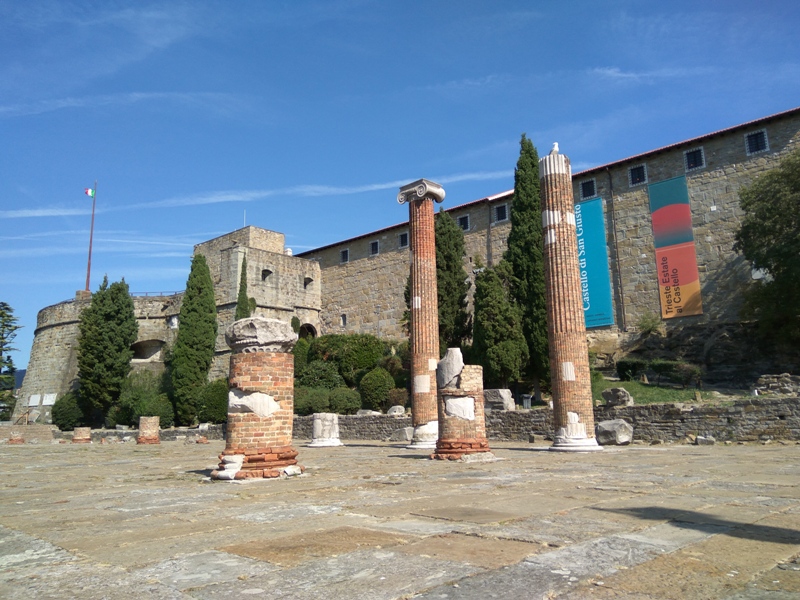
San Giusto castle






